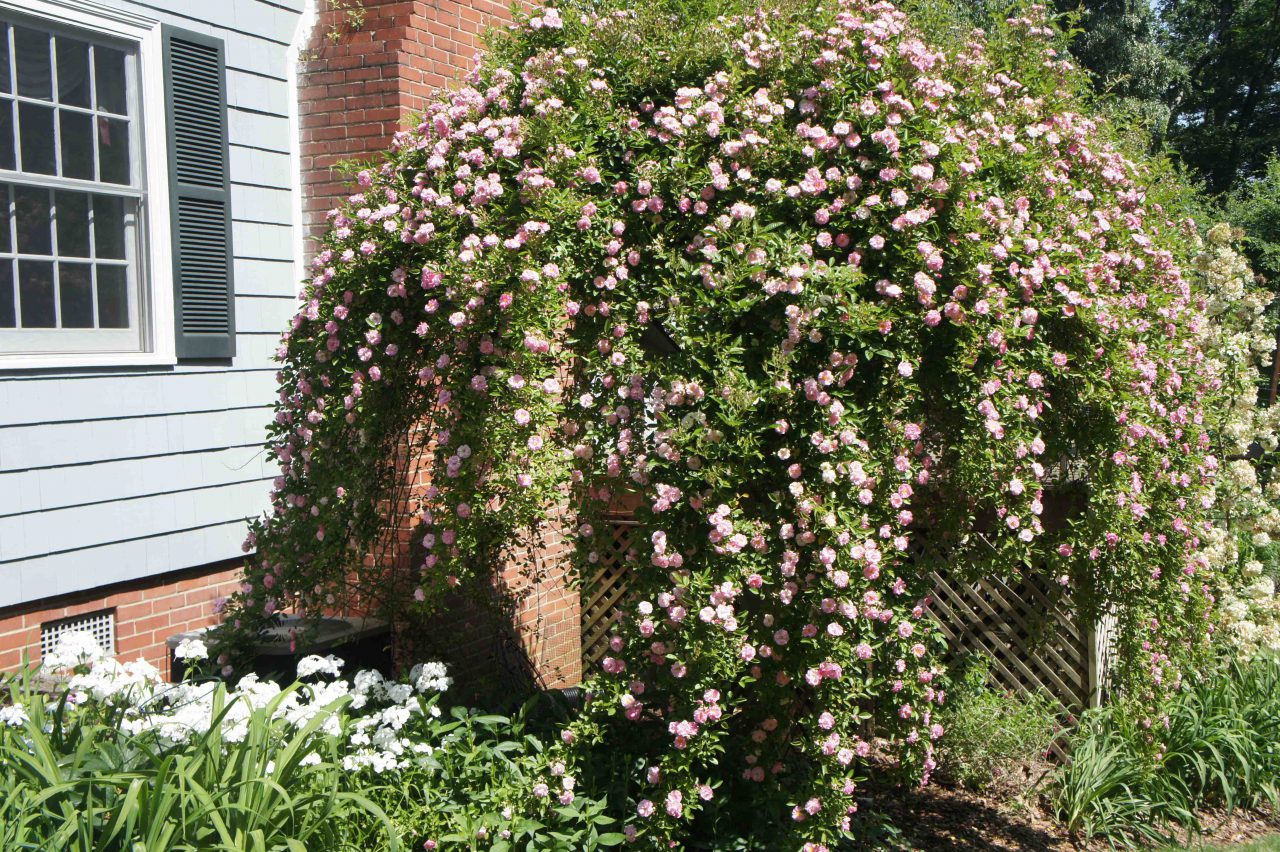I blame it all on the Empress Joséphine. If she hadn’t attempted to grow every known rose in her garden at Malmaison, I might have escaped my obsession with roses.
But Joséphine had it easier. She did not need to spray her roses. Indeed, until the 20th century, gardeners happily grew roses without having to support the chemical industry. What changed? The introduction of the hybrid tea rose, which is so finicky that, typically, it can only survive with chemical aids.
To understand why we created so many roses that cannot survive on their own, it’s necessary to map out the family tree of the genus Rosa. Don’t groan — the history of roses is really quite interesting.
Ultimately it’s not important to determine the differences between a bourbon rose (from the Île de Bourbon, with no connection to the French royal family) and a damask rose (from Damascus, with no association with the fabric), but the gardener must know something about rose genealogy in order to pick the right rose for the right place.
In the beginning, there were the species roses, all of which emerged on their own in the Northern Hemisphere and all of which only bloomed once during the growing season. How many species roses are there? No one knows for sure, with estimates running as low as 50 and as high as 250.
Most of the species roses have had little impact on the horticultural world, but a few of them are familiar to many of us. Rosa banksiae, the lovely Lady Banks rose, holds the record for the largest rose on record: the Tombstone Rose covers an area somewhere between 8,000-9,000 square feet. The gnarly trunk is a mere 12 feet in diameter.
Another species rose of interest is Rosa Roxburgii, the chestnut rose that can be trained to form a tree 15 feet in height. The villainous species rose honor goes to Rosa multiflora, a Japanese import that the U.S. Congress in its wisdom imported by the tons during the Dust Bowl years in an attempt to prevent soil erosion. In my state of North Carolina alone, 50 million specimens were planted. Today it’s near the top of the noxious weed list.
The old garden roses arose via hybridization from the species roses, and, like their forebears, the ones in the West only bloomed once, with the exception of Autumn Damask.
Throughout the ages man has loved roses. We know the Romans appreciated roses — Pliny the Elder waxed eloquently on the rose that may be the one we call Autumn Damask — while the English royal family fought the War of the Roses during the Middle Ages. The ancient Egyptians left us paintings of roses on the interiors of the pyramids, so it’s safe to say that roses have been with us for a long, long time.
Contact with China changed the Western rose picture. China had two different classes of roses, the Chinas and the teas, that bloomed more than once during the growing season. These repeat bloomers mesmerized Europeans, but there was a hitch. They were not winter hardy, so could only be grown under glass in the West.
Numerous attempts were made to hybridize a rose that would not only rebloom but would survive the European winters. Many of these hybridizers were French, thus explaining why so many varieties — in the rose world there are no cultivars but there are varieties — of old garden roses have French names. Many of the China and tea roses were bred to the aforementioned Autumn Damask in the attempt to create a reblooming, winter-hardy rose.
Some of these hybrids are still available today. Eventually the old garden roses consisted of 22 classes, including the Chinas and the teas. At this point in the story, you can get derailed, trying to determine the differences between a damask rose and an alba, or a centifolia from a China. Just persevere and refrain from going down this path yet.
In 1867 an important event occurred in the world of roses: the introduction of La France, the first hybrid tea rose. It is this introduction that marks the delineation between the old garden roses and the modern roses.
All roses appearing after 1867 are modern roses, even if some resemble old garden roses in shape and form. Consisting of 14 classes, including the hybrid teas, polyanthas, floribundas, and shrub roses, modern roses dominated the 20th century landscape, with the quintessential rose considered to be the hybrid tea All-American Beauty.
Throughout the 20th century, rose gardeners sprayed endlessly — and this is the century that mandated that roses were hard to grow. Hybrid teas are glorious creatures if you want to bring roses indoors for floral arrangements. However, besides their fatal susceptibility to black spot, they also have other drawbacks.
Most hybrid teas have no scent at all, as scent is one of the first attributes to go in the hybridization process. As sublime as their flowers are, their shrub form is stiff and graceless. To my eye their worst crime is that it is impossible to incorporate them into the perennial garden because of their need for constant chemical treatment. Therefore, we create “rose gardens,” usually consisting of two dreary rows of hybrid teas placed awkwardly in a corner of the garden.
The next important date in rose genealogy is the year 2000 when the Knock Out rose was introduced. Suddenly gardeners wanted roses that required little care — and Knock Out, becoming the best-selling rose of all time, answered the call. Suddenly gardeners awakened to the fact that Joséphine knew all the time: there are lots of roses that are strong enough to make it on their own.
Next month I’ll discuss how to find sustainable roses and what to look out for. Remember, some great roses only bloom once — and that’s okay.









